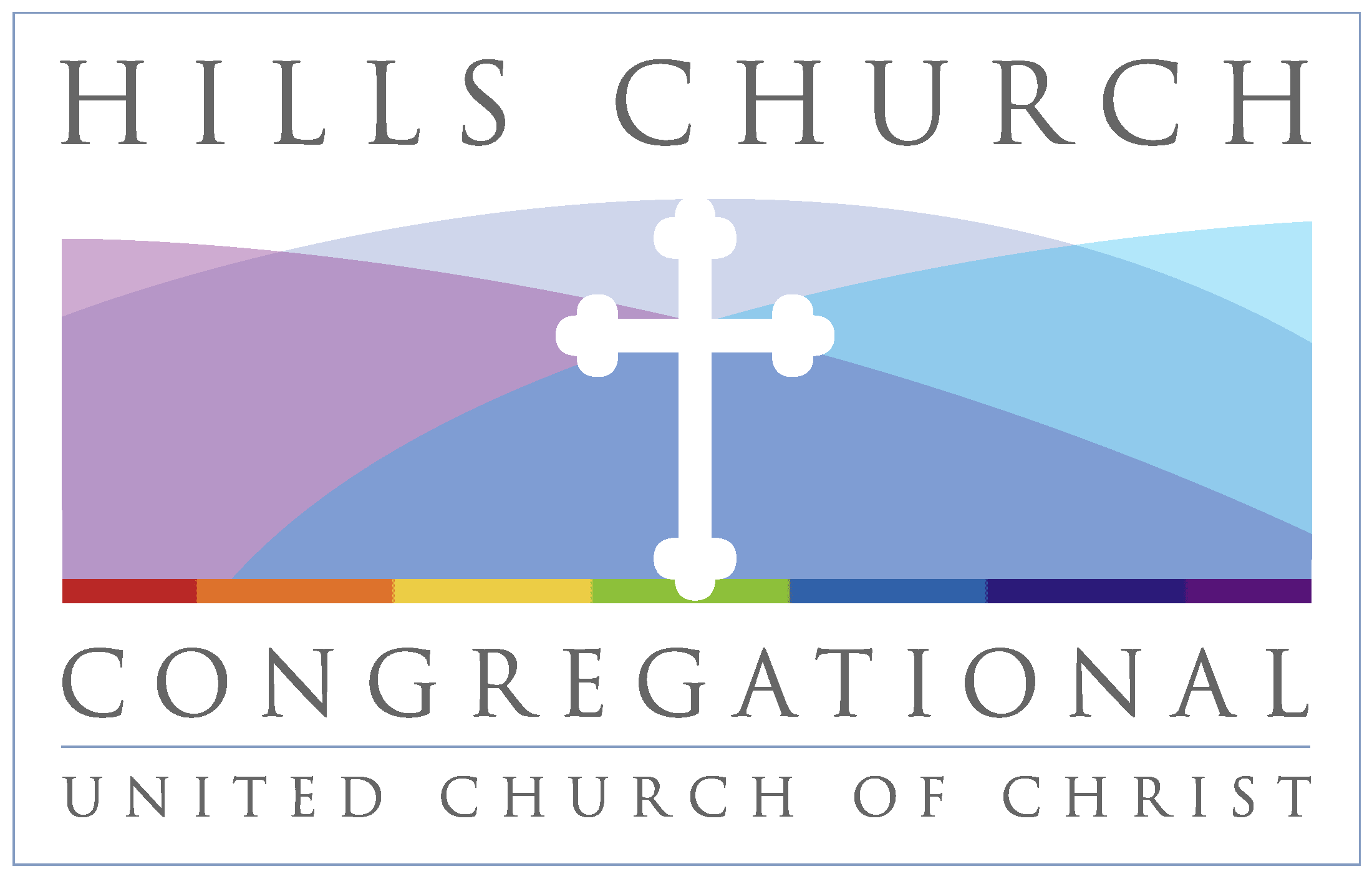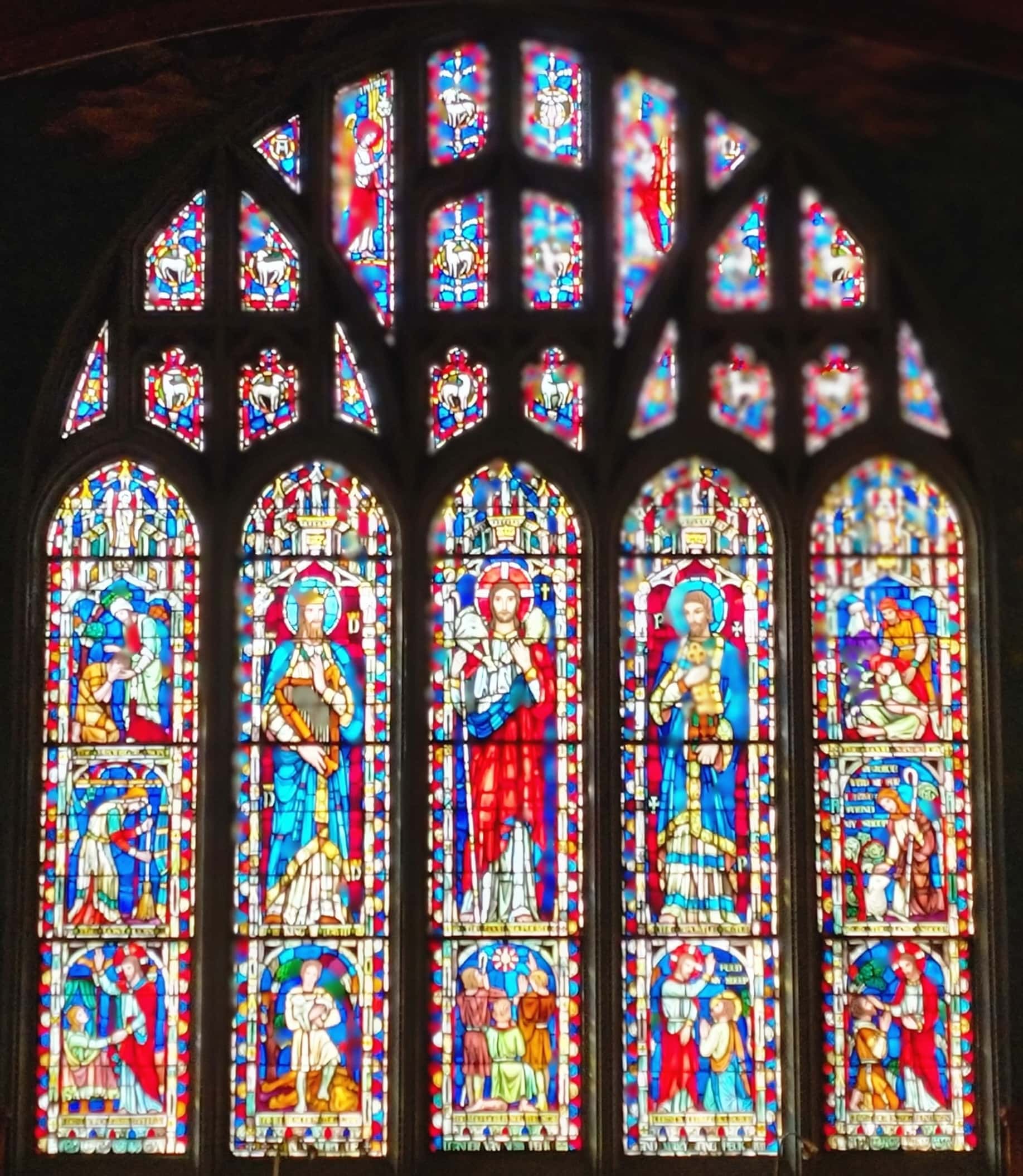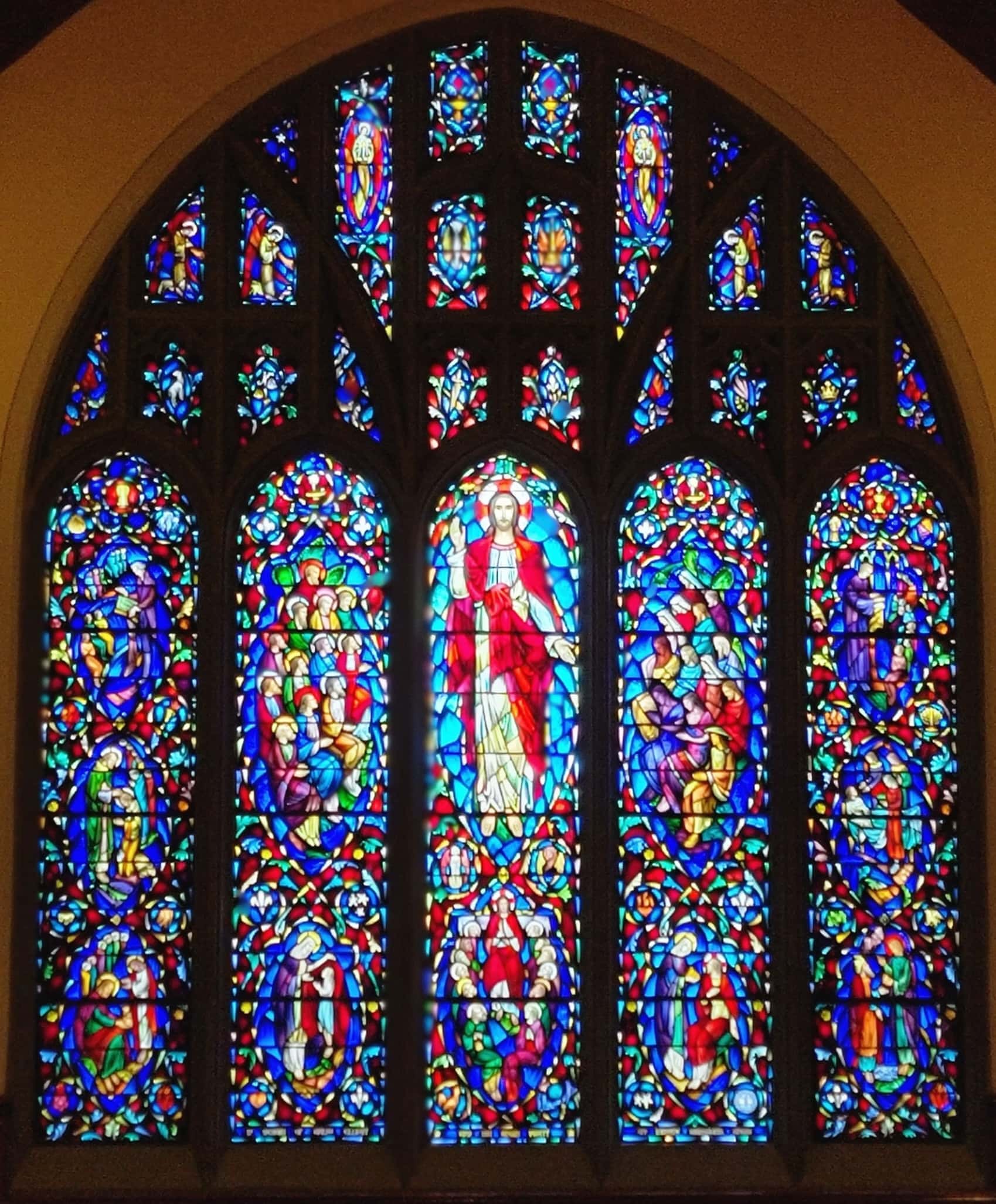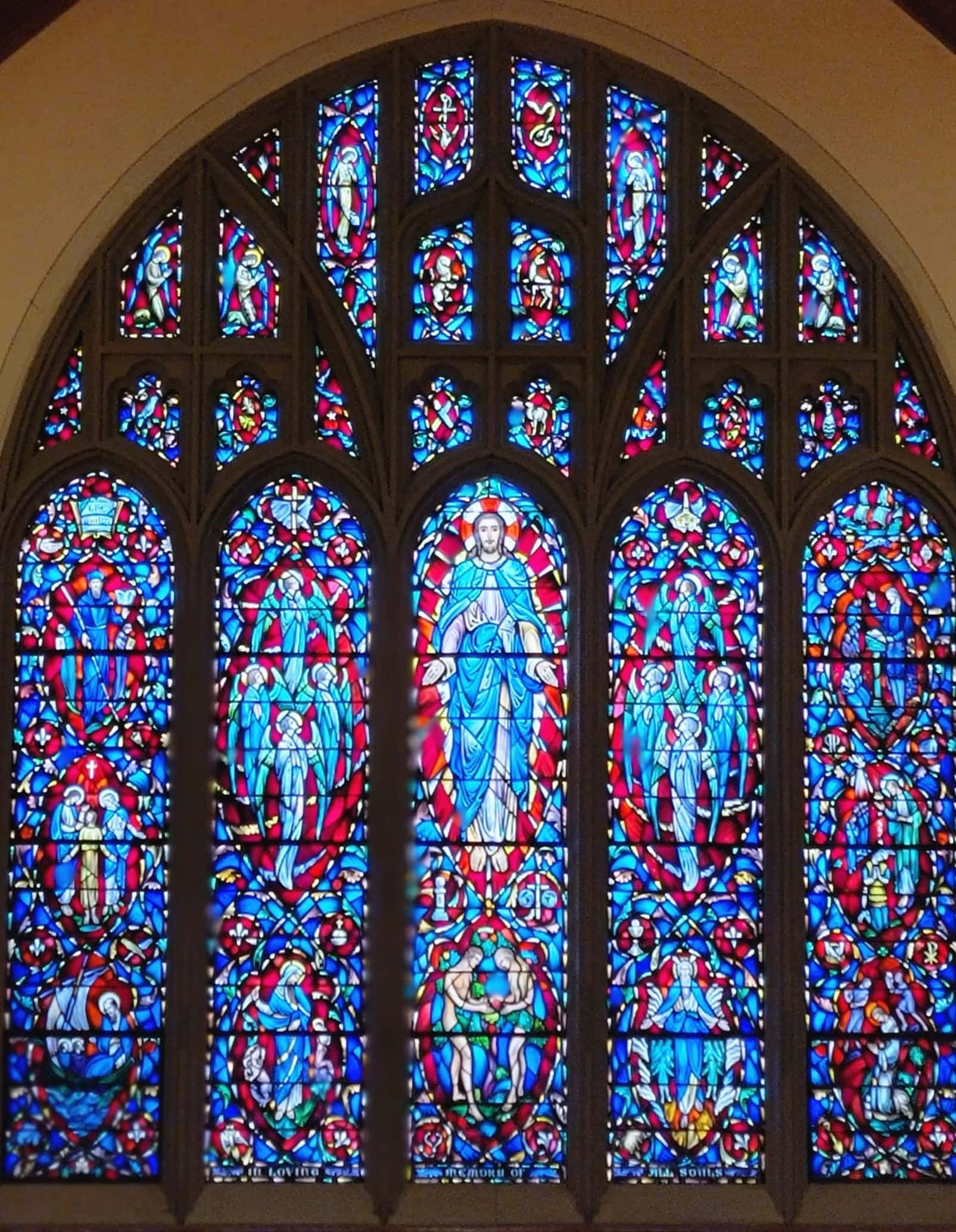From its founding in 1847 as the Orthodox Trinitarian Church
in Grantville (now Wellesley Hills), with a membership of 30, the Wellesley Hills Congregational Church has grown into a large suburban church with over 600 members. Most of the first members had belonged to what is now the Wellesley Congregational, or Village, Church, and our first pastor, the Rev. Harvey Newcomb, had been minister there before his dismissal in 1846. Early members cited distance as a major reason to establish a new parish, but loyalty to Newcomb and some theological differences also played a large part.
The original church building, on the present property, was a typical steepled New England meetinghouse.

There were two Sunday services and a weekday prayer meeting, with a pipe organ for music. The congregation grew, and by 1903 the church had built a very different new meetinghouse, our current sanctuary building.
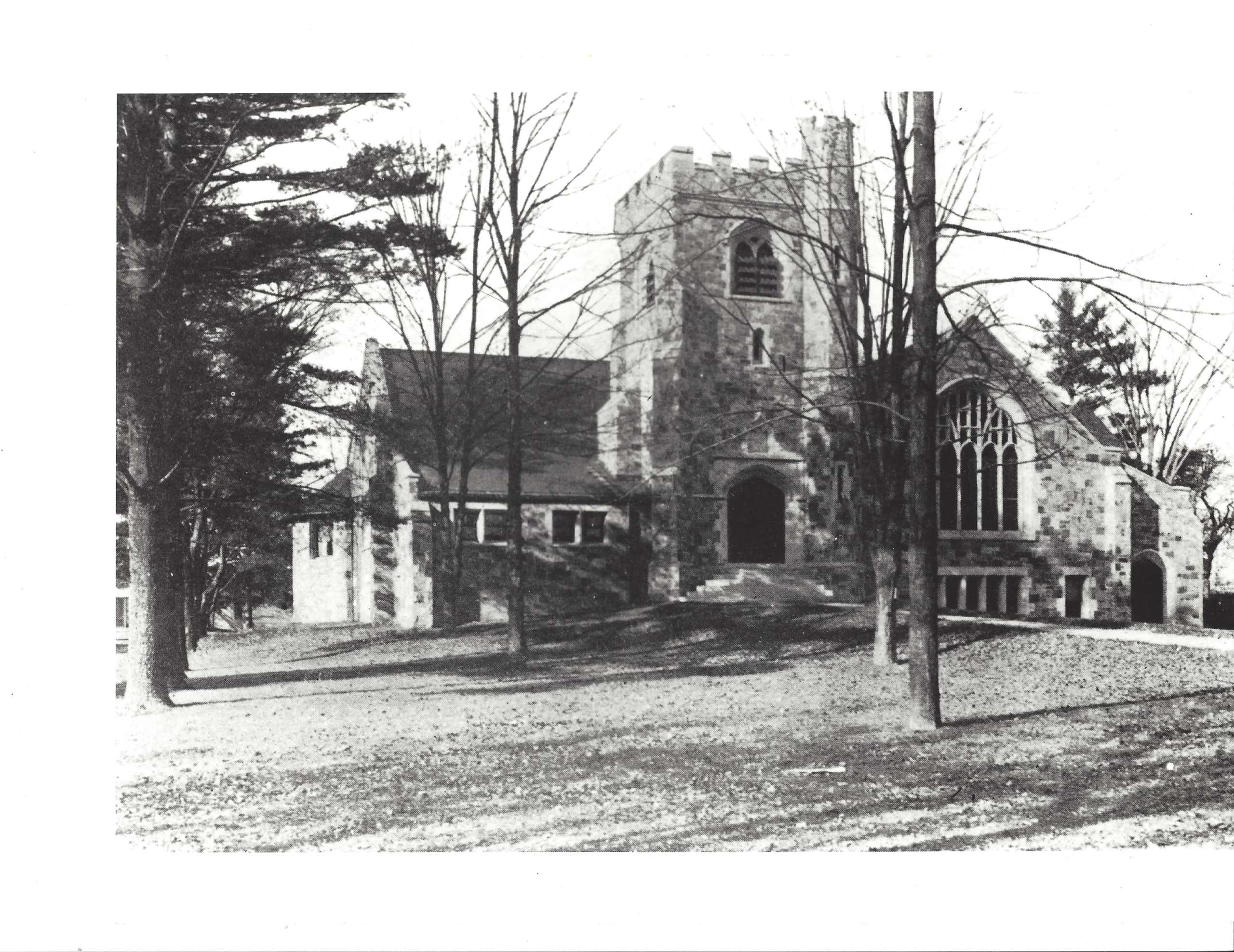
Over the succeeding decades, the Main Sanctuary began to be decorated with several magnificent stained-glass windows as well as a mural painted by church member and prize-winning artist Mary Brewster Hazelton

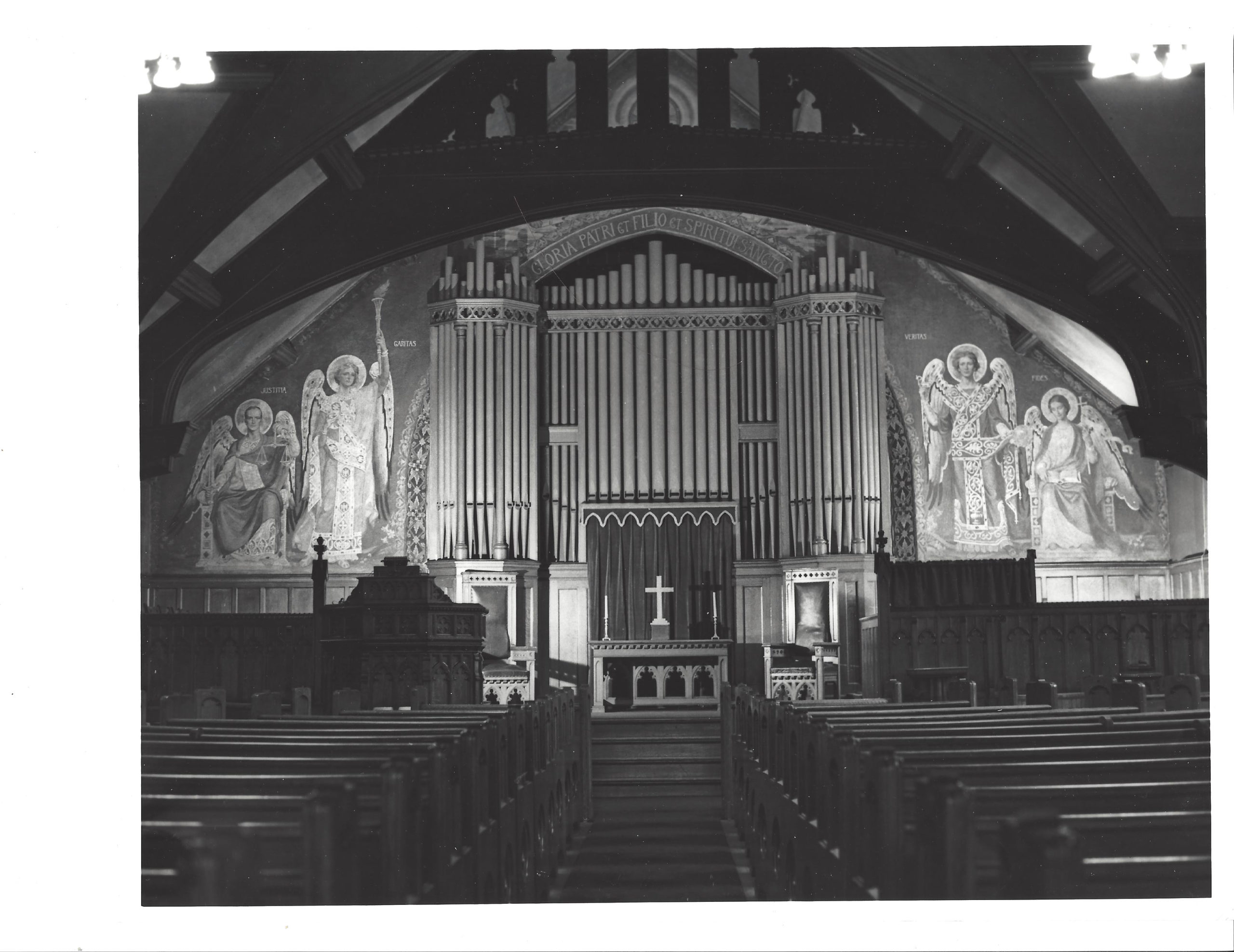
The Hills Church responded to the Depression years with a Clinical Ministry program,
a part-time counseling program from 1931 to 1936. Beginning in 1938 under the leadership of Rev. Carl Gates and church member and businessman/educator Roger Babson, the Open Church group volunteer organization made sure the church building was open to the community for an hour in the afternoon and an hour in the evening, welcoming newcomers and allowing time for personal prayer, counseling and even financial assistance.

Main Sanctuary after 1956 renovation (2001)
Following World War II church membership again increased, and new building projects
included renovation of the main sanctuary, construction of the Parish House and also a new smaller chapel (named after long time Minister Jack Wallace, who was also an artist and designed the stained glass windows for the new Chapel and also the stained glass windows in the north and south transepts of the main sanctuary)

Main Sanctuary after 1956 renovation (2001)

Laying Parish House Cornerstone November 14, 1948

Centennial Celebration 1947

The John Winthrop window is typical of the memorial windows in Wallace Chapel which trace the heritage of the Congregational way in England and New England

Groundbreaking, April 1997 Accessibility Renovation
with elevator and ramp entry to north narthex (David Wimberly, Chair of “Opening Doors – Building Faith” campaign, with ministers Craig and Ann Adams and Wally Hess, Building Committee Chair)
In 2003 another renovation restored the sanctuary to its 1903 configuration, with curved pews and a warmer aesthetic. Recent projects include modern fire protection, heating, and air quality systems and a renovation of Wallace Chapel to provide more flexible seating.
The Wallace Chapel
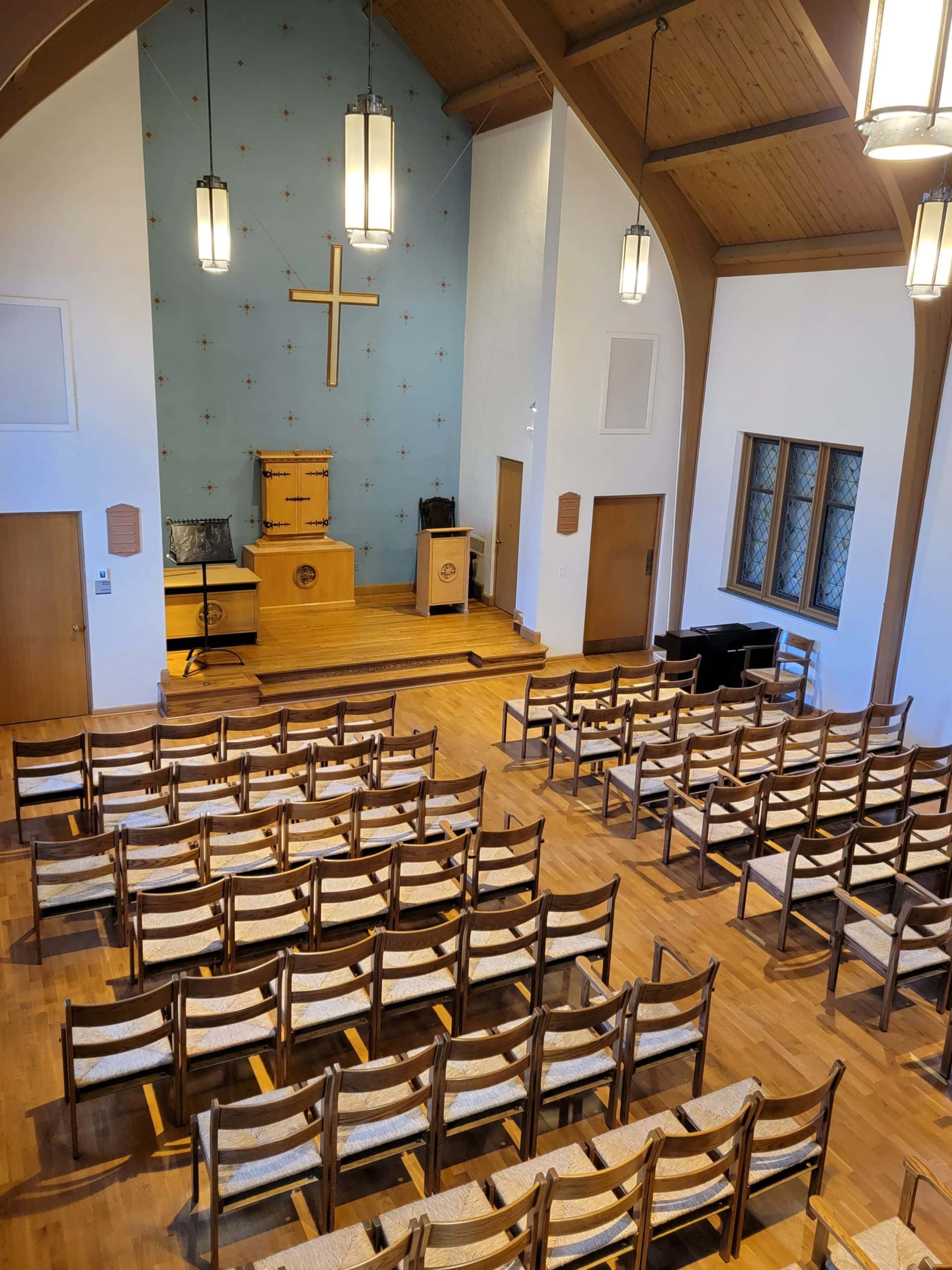
Wallace Chapel altar and main floor 2022
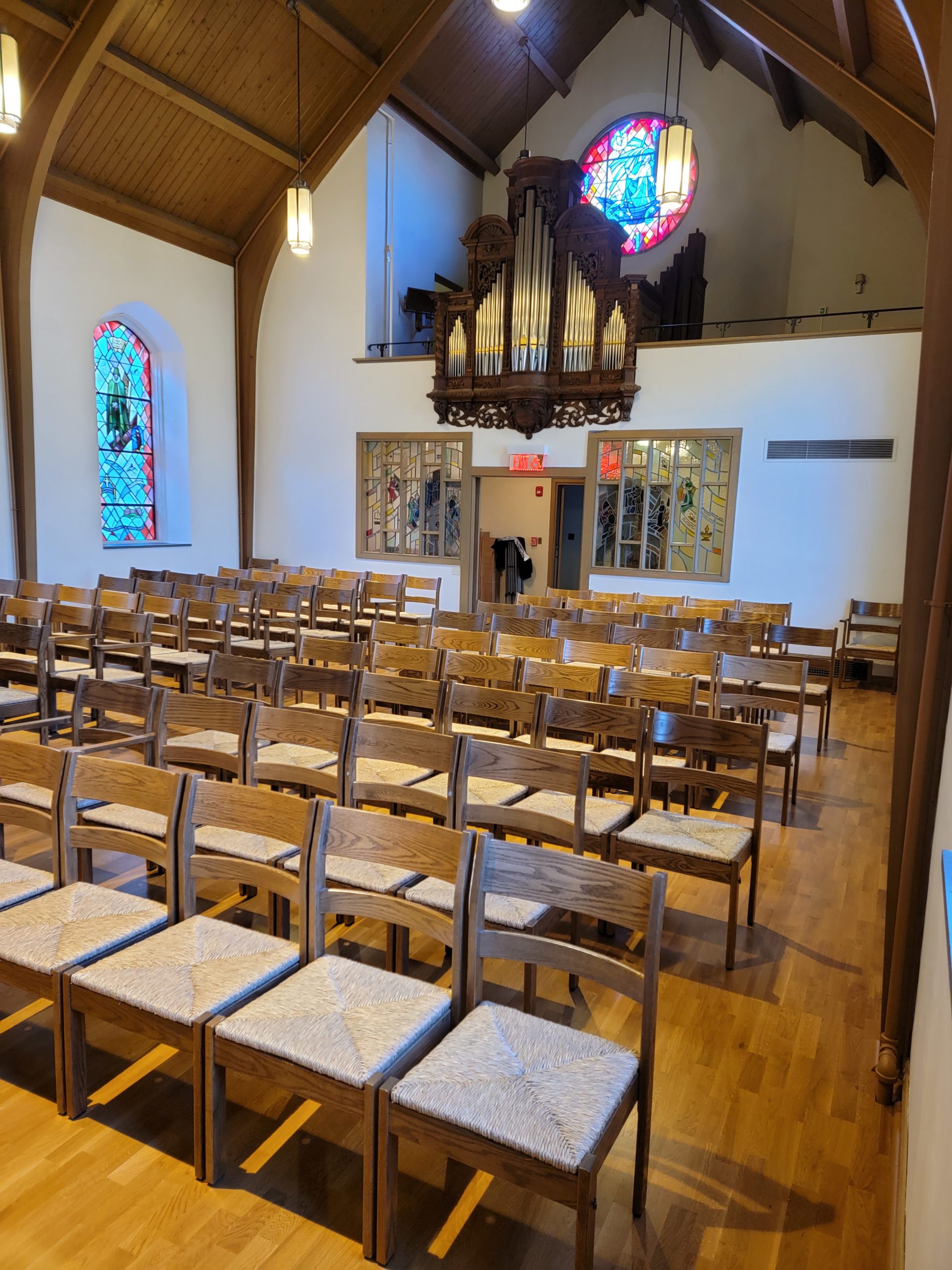
Wallace Chapel Organ loft and entrance 2022
While our building has changed to adapt to increasing numbers and new technology,
and we have had 14 different senior pastors, our history has several consistent themes
- The worship service as central to congregational life
- Excellent music integral to the worship experience
- Continuing commitment to pass on faith to our children, while encouraging them to ask questions, have fun, and make friends
The Hills Church has always ministered to others, from
- Early missionary and ladies aid societies
- Open Church room of the Depression and mid-20th century
- to our more inclusive Christian Service Support Board support
